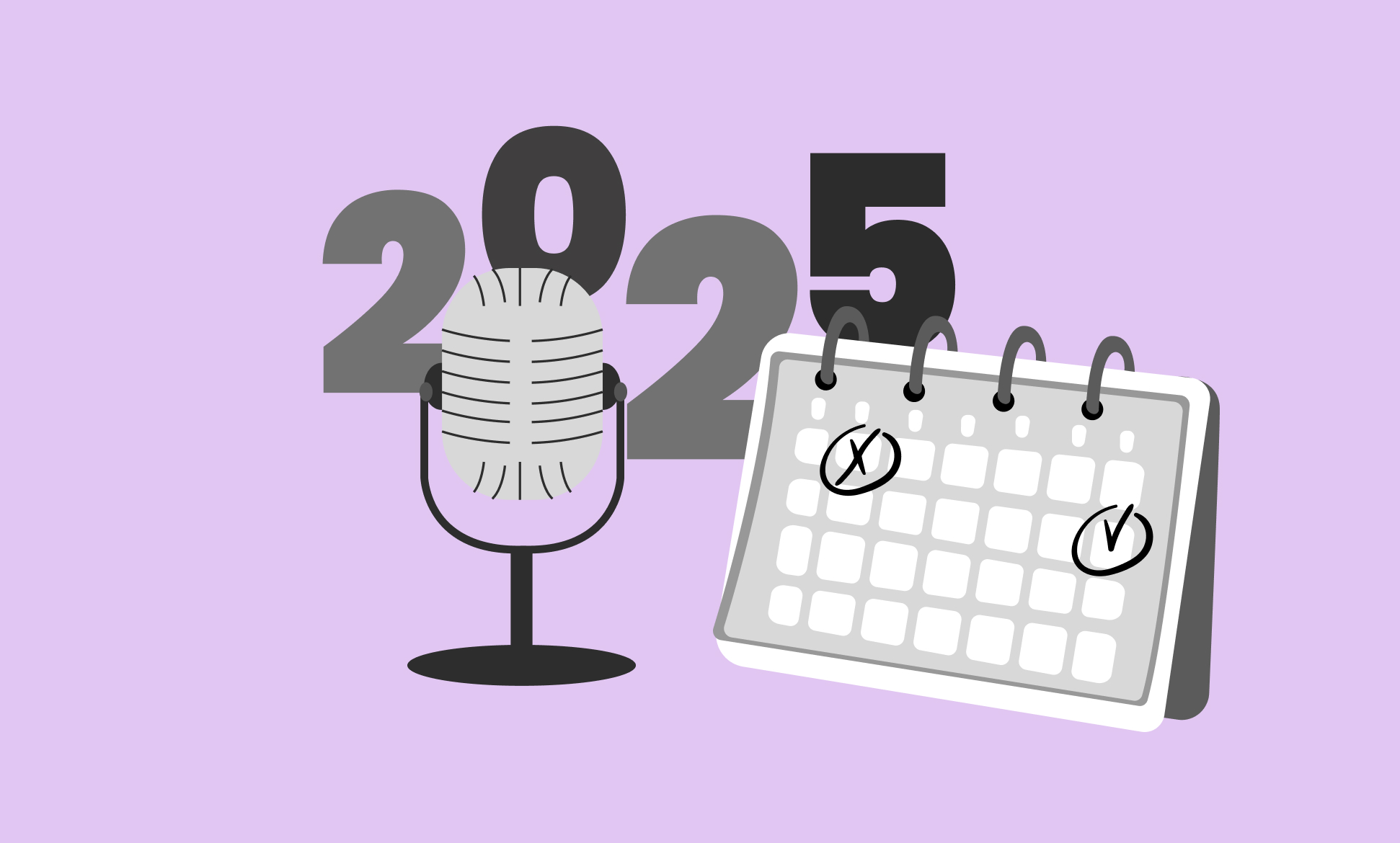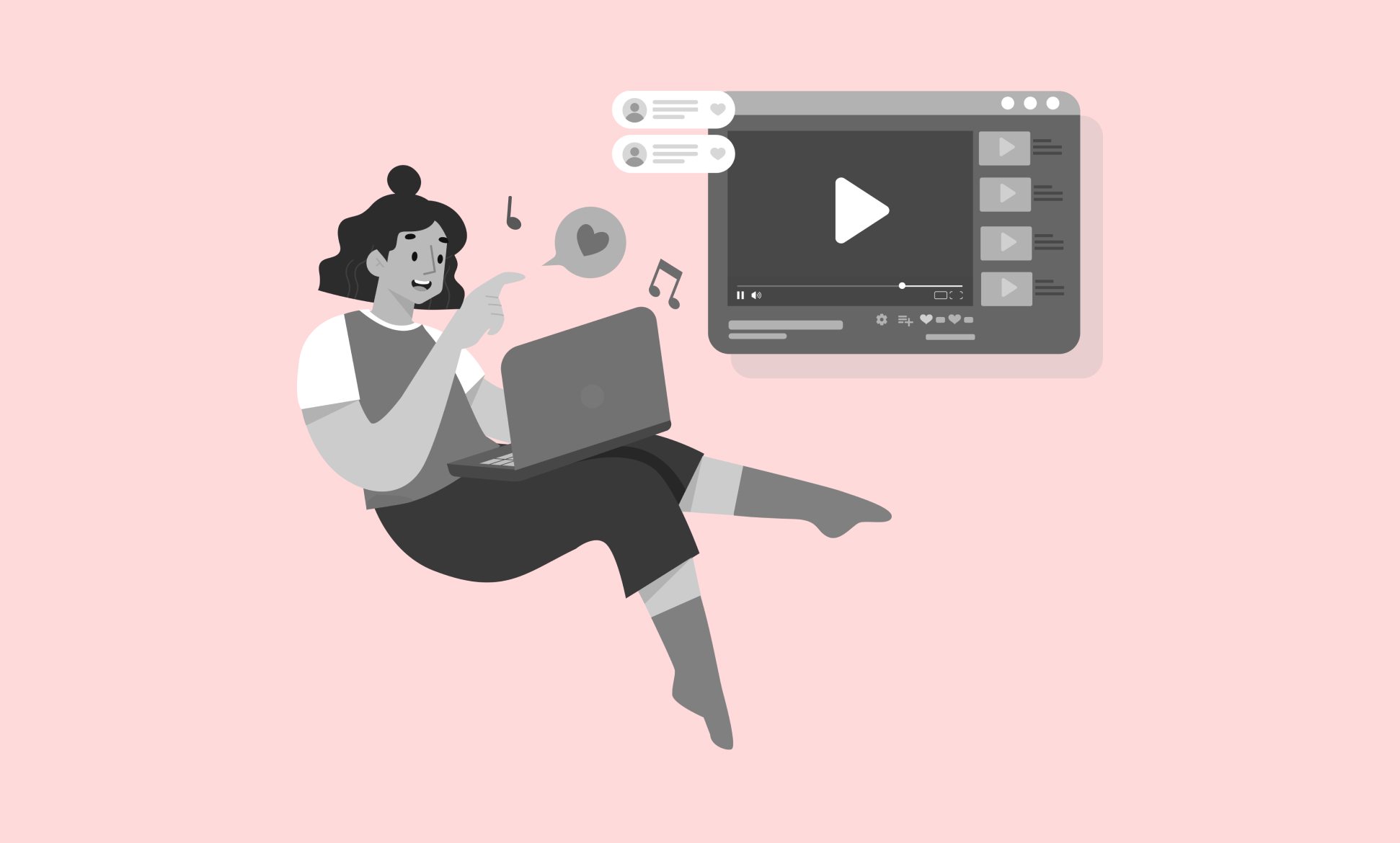So, you’ve got a podcast. You’ve nailed your niche, your mic sounds great, your content’s solid, and now you’re eyeing YouTube.
Why? Because everyone keeps saying, “YouTube is the future of podcasting.”
But then you upload an episode — audio-only, maybe with a static image or a simple waveform, and it… just kind of sits there. Maybe a couple of views. A thumbs up. But overall, radio silence.
Here’s the problem: YouTube isn’t a passive platform.
It’s not a place where content goes to quietly exist. It’s a search engine and a visual-first platform. And podcasts? Well, they need a little help fitting in.
The good news? Optimizing your podcast for YouTube doesn’t mean reinventing the wheel or turning your spare room into a full-blown video studio. It just means understanding how YouTube works — and making a few smart tweaks to play to its strengths.
In this post, we’re walking through the practical (and proven) ways to make your podcast actually work on YouTube. From formats to titles to thumbnails and discoverability — this is how you get your show in front of the right eyes (and ears).
TL;DR: How to optimize your podcast on YouTube
- Understand YouTube’s formats: Post both full-length episodes and YouTube Shorts for maximum reach. Short-form and long-form video content are prioritized in the algorithm.
- Complete your podcast channel: Customize your channel with a banner, avatar, and trailer that reflect your podcast’s theme.
- Organize playlists: Create separate playlists for each podcast or season to make navigation easy for listeners.
- Add captions: Make your podcast more accessible, engaging, and discoverable.
- Optimize metadata: Use relevant keywords in episode titles, descriptions, and tags to improve searchability.
- Design thumbnails: Create eye-catching, consistent thumbnails to boost click-through rates and visibility.
Why should you list your podcast on YouTube?
With over 2.7 billion monthly active users, YouTube presents a massive opportunity for creators to build a bigger audience, deepen engagement, and access data that traditional podcast apps don’t provide.
Here are some key reasons why we suggest all podcasters upload their shows to YouTube:
Tap into YouTube’s growing user base
YouTube isn’t just a video platform — it’s a search engine, a content hub, and a discovery tool.
In fact, 28% of weekly podcast listeners in the U.S. use YouTube to consume podcasts, more than any other platform. Plus, nearly half of podcast listeners discover new shows on YouTube.
For independent creators, that’s an opportunity to get in front of people who might not use traditional podcast apps. Your audience may already be on YouTube — you just need to meet them there.
Build a community
Compared to traditional podcast apps, YouTube offers a robust set of community engagement tools. For instance, comments, replies, and live streaming give way to two-way communication that turns casual listeners into loyal community members.
This is backed up by research. A new report from Cumulus Media and Signal Hill Insights found that people who discover a podcast on YouTube say they stick with the platform for comments, community, entertainment, recommendations, and unique platform features.
Understand what’s working right off the bat
One of the most helpful (and underrated) features of YouTube is the ability for your audience to give immediate feedback via likes/dislikes and comments. Unlike podcast platforms, where you might only get a star rating, YouTube offers visible engagement that tells you, at a glance, what content is resonating.
You can quickly see which episodes your audience loves and which might not be landing as well. And when you pair that with comments, watch time, and audience retention stats, you start to get a very clear picture of how to improve and grow.
Enhanced discoverability
While platforms like Spotify and Apple Podcasts lean heavily on podcast charts or listener recommendations, YouTube operates like a search engine.
In fact, it’s the second-largest search engine in the world. That means your podcast can show up not just when someone types in your show title but when they search for topics, questions, or themes you cover.
According to Sounds Profitable, 52% of podcast listeners say they discover new shows through YouTube, second only to personal recommendations. That’s a massive opportunity — especially for indie creators and niche podcasts that might not land on the homepage of a traditional listening app.
But here’s what makes YouTube even more powerful: its algorithm is built to recommend, not just rank. It doesn’t matter how big your audience is. If your episode gets people watching and engaging, YouTube’s algorithm will start serving it to similar viewers. That levels the playing field in a way that Spotify and Apple Podcasts don’t.
Now that you understand a bit more about the potential of YouTube, let’s dive into how you can best optimize your podcast for the platform.
How to optimize your podcast for YouTube
Now that you understand a bit more about why uploading your podcast to YouTube is so important, here are our tips to optimize your podcast for the platform:
Get familiar with YouTube’s formats
Uploading your podcast to YouTube isn’t as simple as dropping in an audio file and hoping for the best.
The good news? You don’t need a Hollywood budget or a full video crew to make your podcast content work on YouTube. You just need to be intentional about how you format and present it.
For podcasters, you’ll want to be familiar with these two formats:
- Full-length episodes (deep dives for subscribers who want the whole story)
- YouTube Shorts (under 60-second clips that are built for virality)
If you want to make the most of YouTube Podcasts, you won’t want to sleep on Shorts. They’re not just another platform trend — they’re being heavily prioritized in YouTube’s algorithm. Short-form clips that tease your episode, highlight a moment, or answer a compelling question can hook viewers quickly. And with new tools to easily trim longer episodes into Shorts directly inside YouTube Studio, there’s less friction than ever.
Do I need full video episodes to leverage these formats?
Now comes the big question: to video or not to video?
YouTube has shared that podcasts with hosts on camera consistently outperform static visuals. In fact, 80% of the most-watched podcast videos feature hosts in view — and those tend to rack up twice the watch time.
That said, don’t let video stop you from showing up. Even uploading your audio with a clean branded background or subtle motion graphics is a solid starting point. You can always incorporate video down the line.
Bring your podcast’s brand to life on your YouTube podcast page
Once your podcast is up and running on YouTube, it’s important to make your channel stand out with some solid branding. Even if you don’t plan on adding video to your show, there are several visual elements you’ll need to fill out on your YouTube podcast page to give it that polished, professional look that will attract and retain viewers.
Here’s what you should focus on:
- Channel banner: This is the first thing people see when they land on your YouTube channel. Your banner should reflect the theme of your podcast, featuring relevant graphics and clear text that gives new visitors an idea of what your show is about.
- Channel avatar: This is your profile photo, so keep it simple and recognizable. For podcasts, this could be your podcast cover art, a picture of the host(s), or any other branding elements associated with your show. It should be easy to spot and look professional, even at smaller sizes.
- Channel trailer: If you don’t have one already, you’ll want to create a short, engaging channel trailer to introduce new viewers to your podcast. Use this opportunity to highlight the best bits of your episodes or what listeners can expect. This is your chance to hook potential subscribers, so make it count.
A show that does all these elements particularly well is Call Her Daddy:

Remember, consistency is key. If your podcast already has established branding (think logo, colors, fonts), try to incorporate these elements into your YouTube channel to keep things unified. You want your existing audience to recognize your YouTube page as the official home for your show.
Playlist organization
Playlists on YouTube are a great way to organize and boost your podcast’s visibility. When used correctly, they make it easier for listeners to find and binge your episodes, improving engagement and discoverability. Here are some tips:
- One show per playlist: Start by creating separate playlists for each podcast you have. Don’t mix episodes from different shows or unrelated content in one playlist. This helps both YouTube’s algorithm and your audience stay focused. If your podcast has seasons, don’t split them across multiple playlists — keep it all together for easy navigation.
- Organize for easy consumption: For serialized podcasts, start your playlist with the oldest episode. For more topical shows, put the latest episode first. This helps listeners follow the content in the right order and get the most out of your show.
- Optimize for search: Use your podcast’s exact title for the playlist name and avoid adding extra words like “podcast” unless it’s part of the title. Write a clear description with relevant keywords to help improve searchability and get your show in front of new listeners.
Add episode captions
This shouldn’t come as a surprise, but captions are very important when it comes to making your podcast more accessible and discoverable on YouTube. They’re essential for viewers who tune in without sound — think about people mid-commute or those who are hard of hearing. Plus, captions help YouTube’s algorithm understand your content better, which boosts your podcast in search results.
But don’t just stop at the dialogue. Add fun touches like emojis or descriptions of non-verbal sounds to make the experience more engaging. This little extra can not only make your content more enjoyable to watch but also improve retention.
Optimize your metadata with relevant keywords
Before we get into podcast keyword optimization on YouTube, let’s take a minute to make sure we’re all on the same page about what podcast keywords are and why they’re so crucial.
Podcast keywords are terms or phrases that describe your podcast or specific episodes. They’re the words your audience is likely to type when looking for content like yours. For example, if you host a podcast about marketing strategies, relevant keywords might include “digital marketing tips” or “marketing strategies for small businesses.”
Keywords matter because they help your content show up in search results (an element of your podcast’s SEO strategy). Whether your listeners are searching on YouTube or through other search engines like Google, the right keywords increase your chances of being discovered by the people most likely to enjoy your podcast.
When it comes to choosing your target keywords, here are a couple of things to keep in mind:
- Use an SEO tool: To see key data like search volume, how competitive the term is, where you rank with that term, and more, turn to keyword tools like SEMRush or SurferSEO.
- Don’t keyword stuff: Make sure you don’t “keyword stuff,” which means adding too many keywords to the point where your content comes off as spammy. This will actually harm your ranking rather than help it.
- Use a mix of short and long-tail keywords: Long-tail keywords are longer, more specific phrases with less competition, while short-tail keywords are broader and more competitive. Using a mix of both in your podcast titles, descriptions, and episodes helps target a qualified audience while also reaching a larger group.
With that said, here are the key parts of your YouTube podcast that you can optimize:
1. Episode titles
Your episode titles play a huge role in both click-through rates and search rankings. Make sure your title is clear and contains relevant keywords that reflect what your episode is about.
For example, instead of using a generic title like “ [Podcast Name] Episode 1,” try something like “How to Master Email Marketing – Marketing Tips For Beginners.” This title includes specific keywords like “Email Marketing” and “Marketing Tips” that your target audience might be searching for. Keep in mind that titles should be under 70 characters, with important keywords near the front.
2. Show and episode descriptions
You’ll also want to make sure to include your target keywords in your show and episode descriptions. They should give a clear summary of the show/episode, including key points discussed, guest names, and any other important details.
For example, if you’re discussing SEO, your description might start with something like: “In this episode, we break down the top SEO strategies for 2025, featuring expert insights on link-building and content optimization. We sit down with [guest name], the [guest job title], where we talk about [main bullet points].” This helps YouTube understand your podcast content and makes it easier for people searching for SEO tips to find your episode.
Remember to also include relevant links (e.g., your podcast website, social media, or guest pages) to make your description both informative and SEO-friendly.
3. Tags
While tags aren’t as influential as titles or descriptions, they still help YouTube understand your video content and categorize it properly. Add a combination of broad and specific keywords that relate to your episode. For example, tags for an episode on SEO might include “SEO,” “SEO tips,” “digital marketing,” and “2025 SEO strategies.”
You can also include some less competitive, long-tail keywords, like “how to improve SEO in 2025” or “link-building tips for beginners,” to attract more specific searches.
Design your thumbnails
Your podcast thumbnail is often the first impression viewers will have of your episode on YouTube, so it’s essential to make it count. Plus, a well-designed thumbnail can increase your click-through rate and set the tone for the content you're offering.
Plus, YouTube analyzes thumbnails to determine their relevance and appeal, influencing how often your episode will be shown to users. In a crowded space where thousands of videos compete for attention, creating an eye-catching, consistent, and relevant thumbnail is critical.
Let’s take Mr. Beast, one of YouTube’s largest creators, for example. According to Chucky Appleby, the creative lead behind the visuals, the team often develops up to 20 thumbnail variations before a video even starts filming — and sometimes tests hundreds of micro-variations, tweaking everything from shirt colors to facial expressions.
One particularly surprising insight came from testing whether Mr.Beast should appear with his mouth open or closed. After running the experiment across 30 videos, they discovered that thumbnails with a closed-mouth expression consistently led to higher watch time. These kinds of rigorous thumbnail experiments help fine-tune visual storytelling and maximize click-through rates — proving that small creative choices can have a big impact on performance.

When designing your podcast thumbnails, here are some things to keep in mind:
- Keep your design consistent: Consistency in your thumbnail design helps build recognition and familiarity with your audience. By using the same fonts, colors, and graphic elements across your videos, you create a cohesive visual brand that makes it easy for viewers to identify your content.
- Use attention-grabbing visuals: Use high-quality visuals that are relevant to the content — whether it’s a powerful screen grab from the episode, a guest’s photo, or a custom icon. Sharp, high-resolution visuals signal professionalism and can help boost your click-through rate.
- Make sure you can scale down your thumbnails: Thumbnails show up in a variety of places on YouTube, from search results to mobile screens. To make sure yours is readable at every size, check how it looks across different devices and platforms.
Don’t miss out on the YouTube Podcasts opportunity
Uploading your podcast to YouTube is no longer optional — it's a crucial step in expanding your reach, engaging with a wider audience, and optimizing your content for discovery.
YouTube’s unique combination of a massive user base, interactive community features, and powerful search algorithm gives podcasters an edge in growing their shows in ways other platforms can’t match.
However, simply uploading your podcast is not enough to maximize your potential on YouTube. Optimizing your content is key. From incorporating engaging visuals, like branded thumbnails and captions, to organizing your content into playlists and utilizing YouTube Shorts, each element plays a critical role in enhancing your discoverability and engagement. For more podcast tips like these, subscribe to our bi-weekly newsletter, Tuned In.




.webp)






